Mauritius Flag Meaning
Four horizontal stripes of red, blue, yellow, and green representing the struggle for independence, the Indian Ocean, the bright future, and the lush vegetation of this successful island democracy.
- Continent
- Africa
- Adopted
- 1968
- Ratio
- 2:3
- Colors
- red, blue, yellow, green
- Designer
- Gurudutt Moher
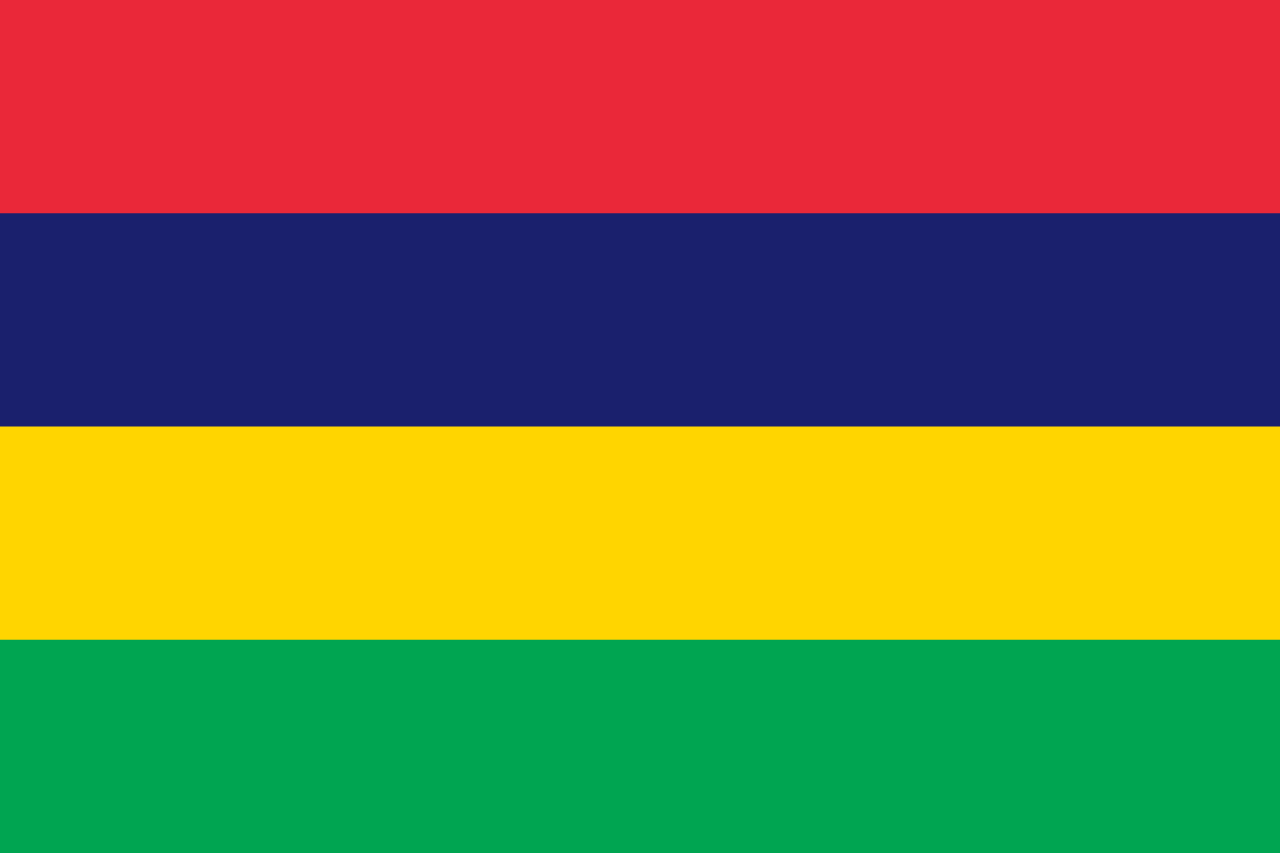
Symbolism
Red Stripe: Represents the blood shed during the struggle for independence and the sacrifices made by freedom fighters. Also symbolizes the strength and determination of the Mauritian people.
Blue Stripe: Represents the Indian Ocean that surrounds Mauritius, symbolizing the island's maritime heritage and its position as a strategic hub in the southwestern Indian Ocean.
Yellow Stripe: Symbolizes the bright future and golden sunshine of independent Mauritius, representing hope, prosperity, and the warmth of the tropical climate.
Green Stripe: Represents the lush vegetation, fertile agricultural lands, and rich natural beauty of Mauritius, including its sugar cane fields and tropical forests.
Four Equal Stripes: The equal width of all stripes symbolizes the equality and unity among Mauritius's diverse ethnic communities: Indo-Mauritian, Afro-Mauritian, Sino-Mauritian, and Franco-Mauritian populations.
History
- 1715-1810: Mauritius was a French colony (Île de France), using French colonial flags while developing a unique multicultural society with French, African, and Indian influences.
- 1810-1968: Under British rule, Mauritius used various colonial flags while gradually developing self-governance institutions and a diverse society through Indian indentured labor immigration.
- 1960s: As independence approached, Mauritian leaders worked to design national symbols that would represent unity among the island's diverse ethnic communities.
- January 9, 1968: The flag was officially adopted on the same day Mauritius gained independence from Britain, with the design chosen to represent national unity and natural beauty.
- March 12, 1992: Mauritius became a republic, but the flag remained unchanged, demonstrating its acceptance across all political parties and ethnic communities.
- 1968-Present: The flag has represented Mauritius through its remarkable transformation into one of Africa's most prosperous and stable democracies over more than five decades.
- 2000s-Present: The flag has gained international recognition as Mauritius developed into a financial hub and tourist destination while maintaining political stability and economic growth.
Trivia
- Mauritius is one of the few African countries with a four-stripe horizontal flag design, making it distinctive among continental African nations.
- The flag represents one of Africa's greatest post-independence success stories, with Mauritius achieving high human development and income levels.
- Mauritius is one of the world's most ethnically diverse countries, and the flag symbolizes successful multiculturalism where no single ethnic group forms a majority.
- The island was uninhabited when first discovered, making Mauritius unique as a nation built entirely by immigrants from Africa, Asia, and Europe.
- The flag appears on Mauritian rupee banknotes alongside images of the extinct dodo bird, which was endemic to Mauritius and has become a national symbol.
- Mauritius has maintained uninterrupted democracy since independence, making the flag a symbol of successful democratic governance in the Indian Ocean region.
- The flag represents the only African country to be classified as 'Very High' on the UN Human Development Index, reflecting exceptional social and economic progress.
- Sugar cane fields, represented by the green stripe, shaped Mauritius's economy and society, bringing together people from different continents to work the plantations.
- The flag flies over Port Louis, one of the busiest ports in the Indian Ocean and a major hub for trade between Africa, Asia, and Europe.
- Mauritius's flag appears at African Union meetings despite the country's geographic isolation, emphasizing its commitment to African unity and development.
- The island nation has no army, making the flag a symbol of peace and diplomacy rather than military power in international relations.
- Tourism marketing often features the flag alongside images of pristine beaches and luxury resorts, promoting Mauritius as a premium destination.
- The flag represents a country where multiple languages are official (English, French, Creole), reflecting the successful integration of diverse cultural traditions.
- Mauritius achieved middle-income status faster than most post-colonial nations, making the flag a symbol of effective development policies and good governance.
- The flag appears prominently during the annual celebration of Independence Day (March 12) and Abolition of Slavery Day (February 1), highlighting key moments in national history.
Related Countries
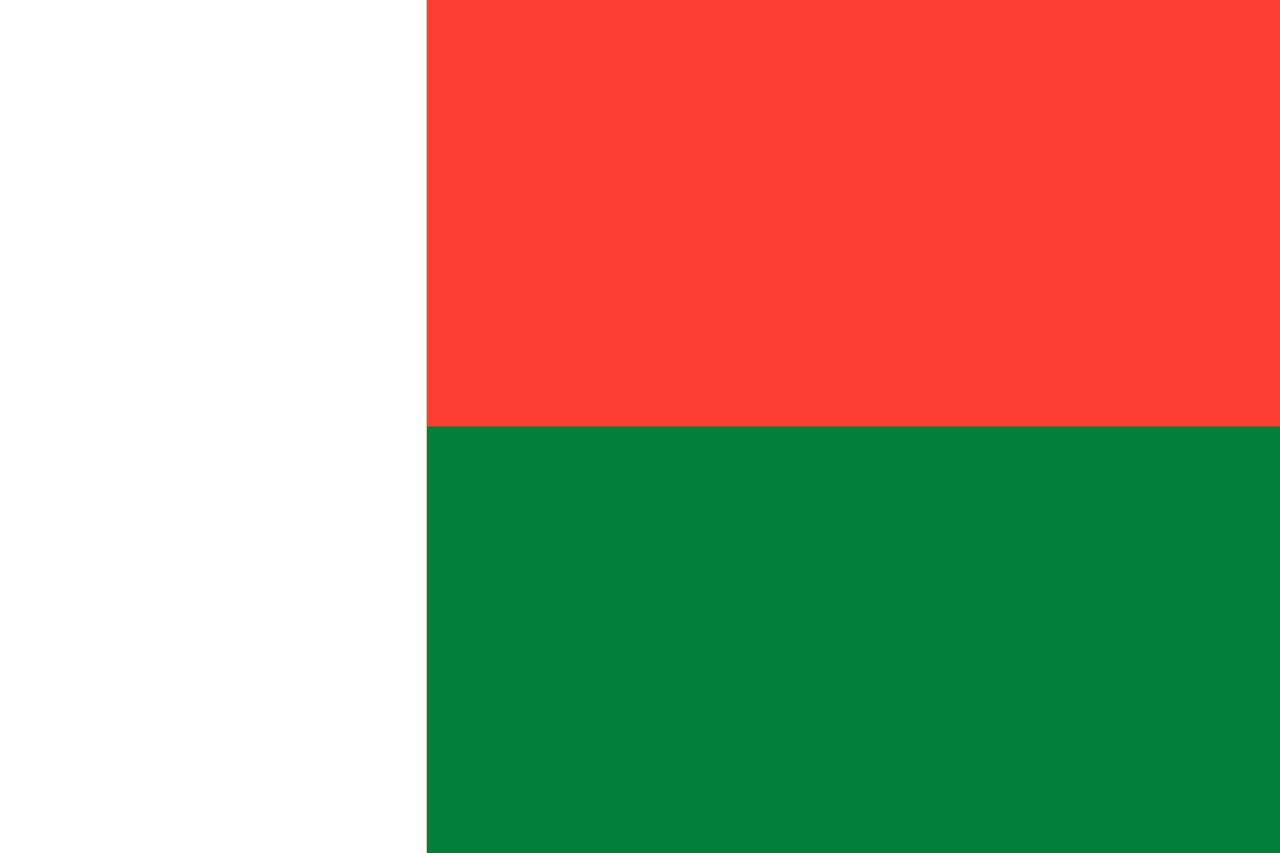
Madagascar
Africa
A white vertical stripe on the hoist side with two horizontal stripes of red and green on the fly side, representing the diverse heritage of the Malagasy people and the unique natural environment of the world's fourth-largest island.
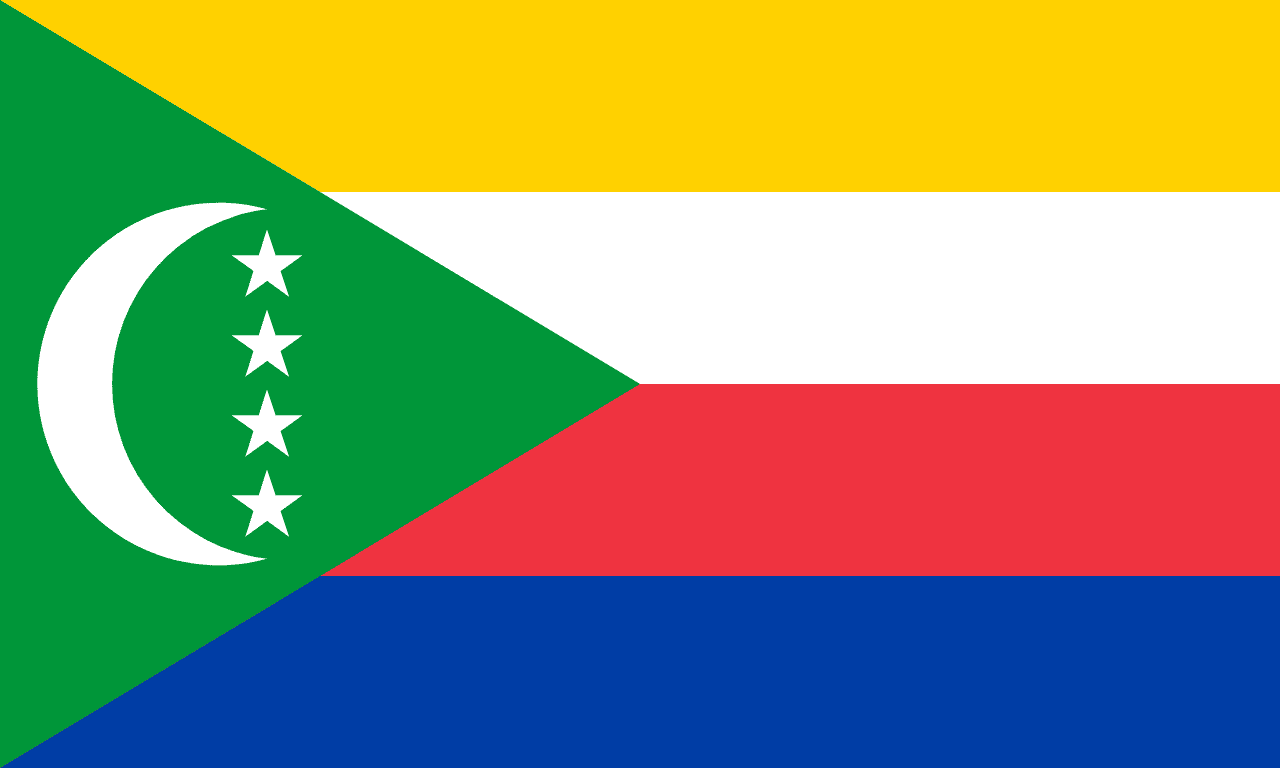
Comoros
Africa
Four horizontal stripes of yellow, white, red, and blue with a green triangle at the hoist containing a white crescent and four white stars, representing the four islands, Islamic faith, and the pan-African heritage of this Indian Ocean archipelago.
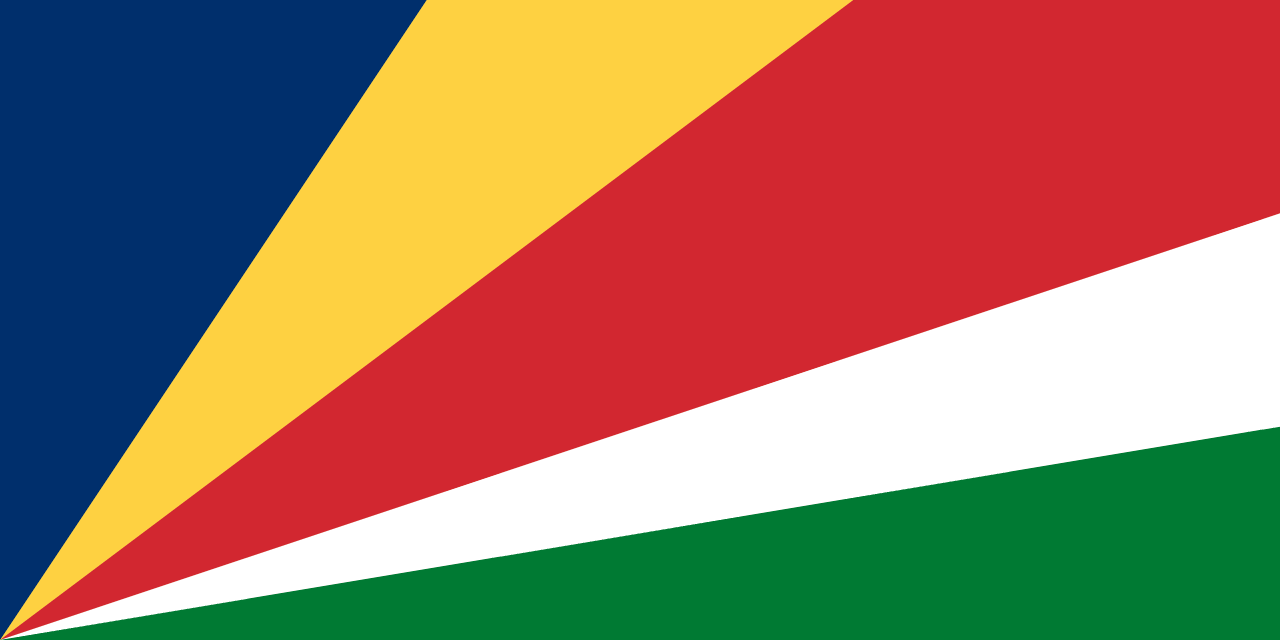
Seychelles
Africa
A flag of five oblique bands radiating from the bottom hoist corner: blue, yellow, red, white, and green. The design symbolizes a dynamic, forward-looking nation embracing unity and diversity.
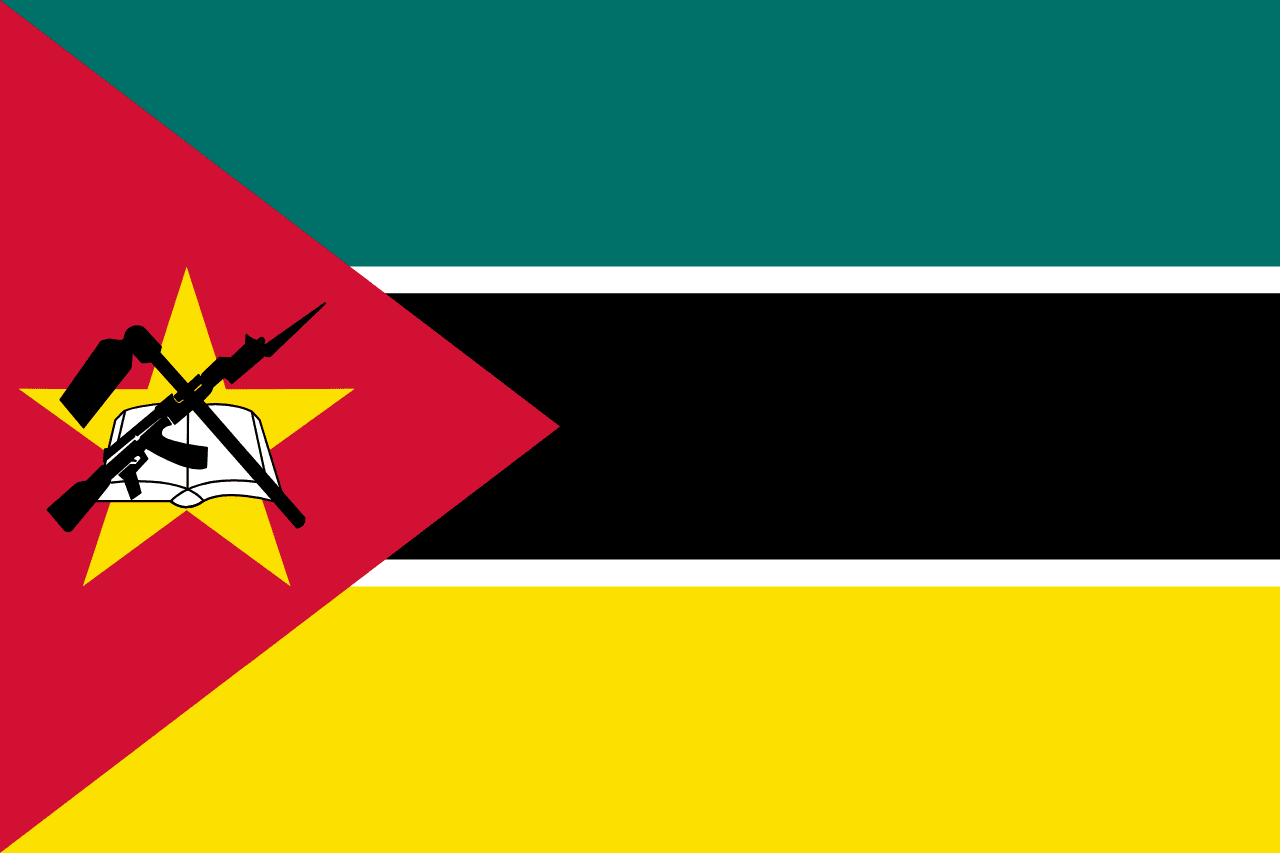
Mozambique
Africa
A horizontal tricolor of green, black, and yellow, separated by white fimbriations, with a red triangle at the hoist bearing a yellow star, a book, a hoe, and an AK-47 with bayonet. The flag uniquely features a modern weapon as a national symbol.
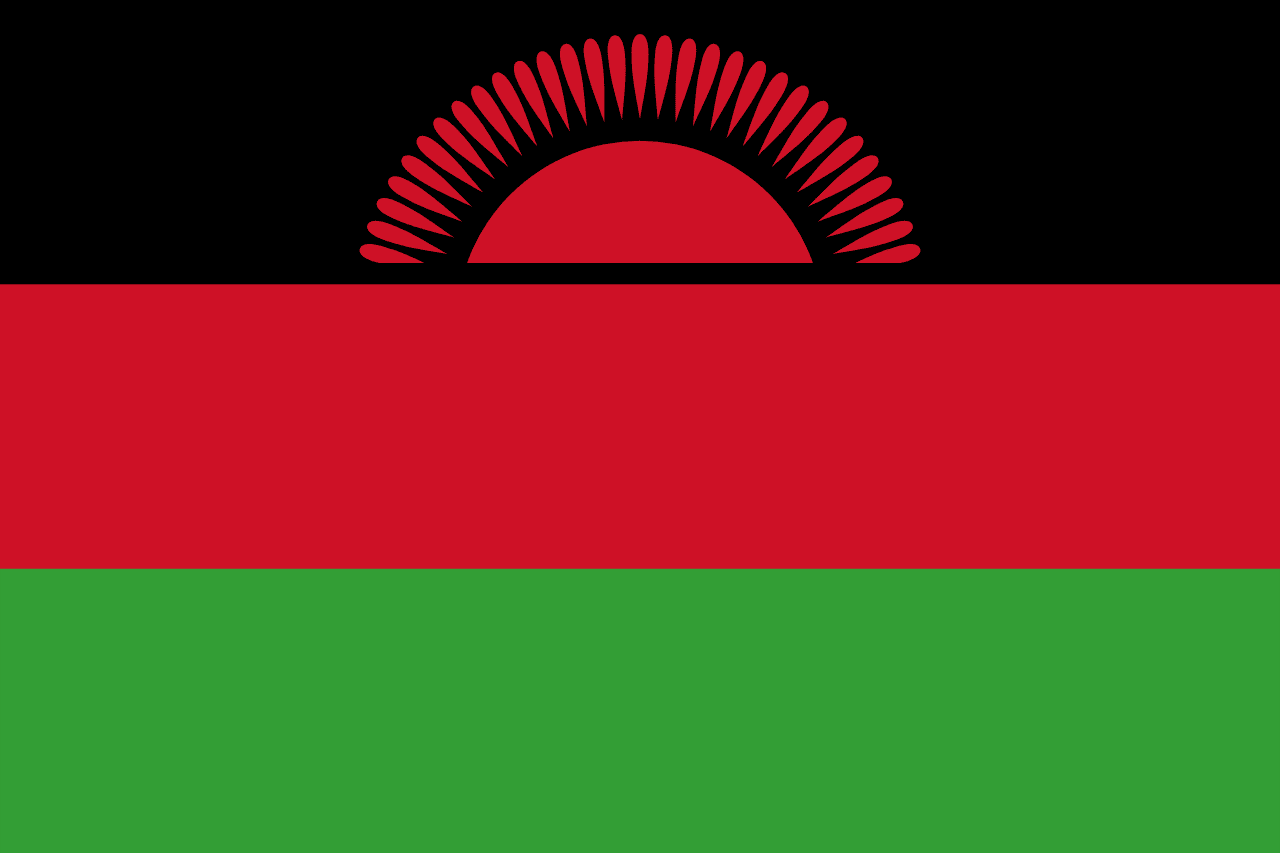
Malawi
Africa
Three horizontal stripes of black, red, and green with a red rising sun in the upper left corner, representing the African people, the blood of freedom fighters, the land's fertility, and the dawn of freedom and hope.
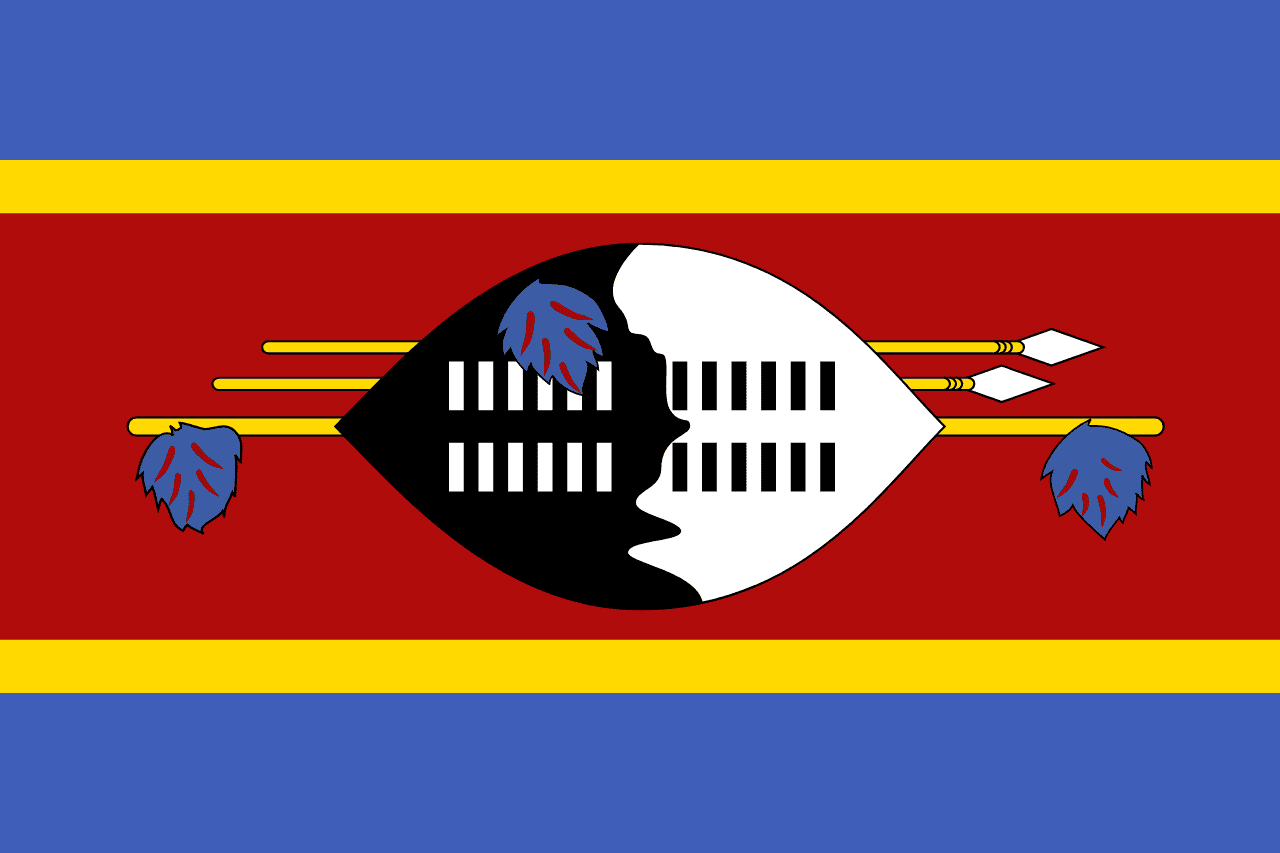
Eswatini
Africa
Five horizontal stripes of blue, yellow, red, yellow, and blue with a traditional Swazi shield and two spears overlaid on the center red stripe, representing peace, mineral wealth, past struggles, and the protection of the kingdom.